
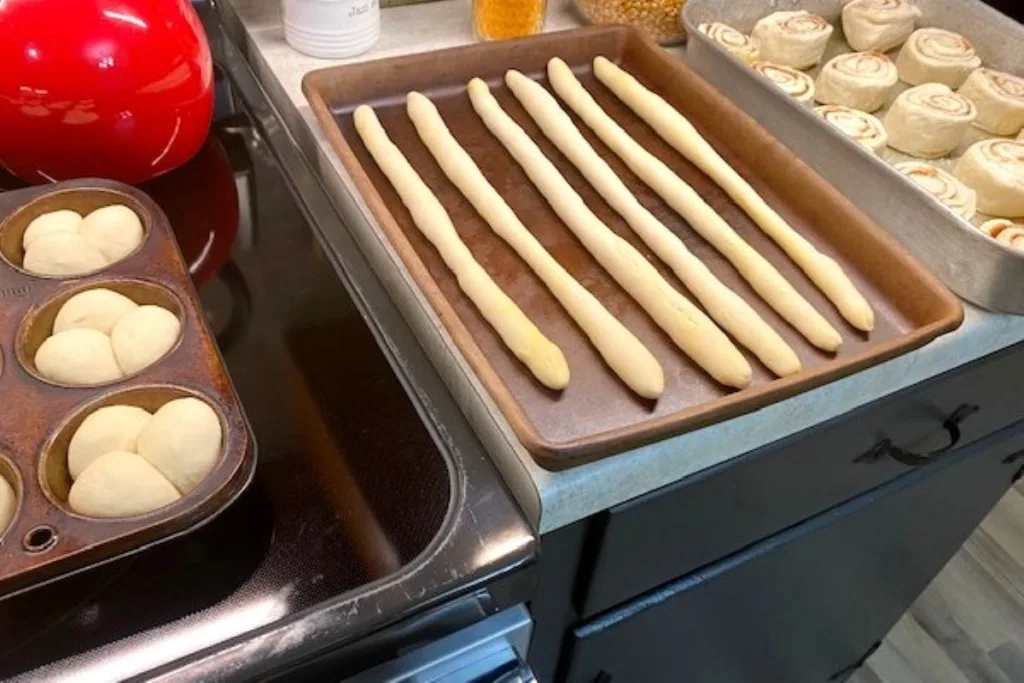
You really need just one recipe for yeast dough, and you can make almost any kind of bread. Yeast bread does not need to be intimidating, and few things are simpler or less expensive. It does not take exceptional baking skills to make bread, dinner rolls, breadsticks, cinnamon rolls, or Runzas.
Once you get comfortable making yeast bread dough, you won't even need to measure the flour. The dough will tell you when it's ready, and your hands will recognize when the dough feels just right.
Bread baking can be and should be a very soothing, comforting process. Over the years, I have come to love King Arthur Flour and use it exclusively!
This "make anything" yeast bread recipe has only six ingredients, and all you need are water, flour, yeast, salt, sugar, and a little butter or oil. The ingredients are cheap, readily available, and can be stored easily.
That means when you are learning, dumping a batch and starting over is not a loss to mourn. It's part of the learning curve, that's all.
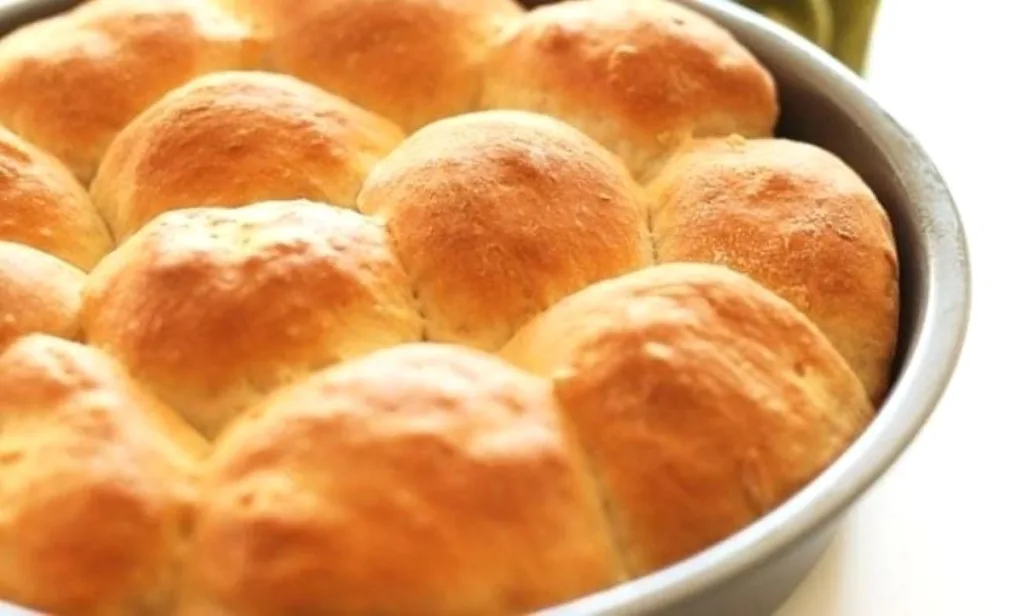
I am all about making yeast bread as simply as possible. That way, you'll want to make it often and with confidence. You can read yourself crazy looking at all the well-meaning advice online, so today, let's stay very basic.
The single most important rule for making yeast dough is to have the water at a temperature that's not too hot or too cold. The ideal temperature for water is about 100 to 110. The perfect temperature for a hot tub is 100 to 102 degrees Fahrenheit. That's a good guideline.
"The wrist test" is the next best thing to a thermometer. The yeast will probably like it if the water feels comfy and warm, not too cool or too warm on your wrist. If you ever gave a baby her 3:00 AM feeding, you tested the temperature of the baby's bottle the same way! Yeast and wee babies like the same temperature range!
The other single most important thing (Can there be two? Yes.) Yeast can expire. Check the date on the packet or jar, and if in doubt, proof the yeast before you proceed.
To proof yeast, put some yeast and a little sugar in warm water, again about 100 to 110 degrees, and let it sit for a few minutes. If it gets foamy and creamy looking, you know the yeast is active and viable for baking.
Yeast bread needs warm water and a bit of sugar to activate. There are two kinds of yeast: regular and quick-rise yeast. I prefer to use rapid-rise or "instant" yeast because it saves a step, so it's about 10 minutes faster. The primary difference is that rapid-rise yeast is processed to have finer granules, which means you can add it right along with the flour, water, and sugar without needing to "proof" it first.
If you want to become a serious yeast bread baker, here's more in-depth information about yeast from the smartest food bloggers I know, The Spruce Eats.
I bake yeast bread a lot, so I buy yeast in bulk. I store it in the freezer until I open it, then put some in a tightly sealed jar in the refrigerator. Yeast kept in the freezer lasts indefinitely.
If you have old yeast packets stashed in a cupboard somewhere, check the expiration date before launching a batch of bread. If in doubt, proof it as described in the link above; if it flops, replace it.
If your yeast is dead, it's gone; you must give it a funeral down the drain and buy some new yeast.
In your large stand mixer, make the dough. Option B: you can do this by hand and knead the dough. Feel virtuous, and build up your arm strength and definition.
These days, I use my Kitchen Aid stand mixer to make bread or rolls because it does a great job of mixing and kneading the dough. For the first 30 years I baked yeast bread, I mixed and kneaded the dough by hand. You can, too, but the mixer makes it faster and easier! But maybe that explains my arms. Sigh.
I have the best hint for making bread dough in a stand mixer: Drape the mixer head and bowl with a clean dishtowel when you add flour; it saves a lot of mess and cleanup.
My second best hint: Use a large, clean paintbrush to sweep runaway flour off the mixer and counter into the trash or sink before you start the soap and water cleanup. Less pasty mess, less time. I admit it. I'm a little lazy.

Here is how you begin when you use instant yeast. Put warm water, yeast, sugar, salt, and butter in the mixer bowl and add a cup of flour. Using the whip attachment, mix thoroughly, scraping down the sides of the bowl occasionally.
If you use active dry yeast, dissolve it in a small amount of warm water with a little sugar before adding it to the mixing bowl. Add two more cups of flour, one at a time, and beat well. Keep the mixer draped for the next step.
Switch to the dough hook and add flour gradually until the hook starts pulling the dough away from the sides of the bowl. Stop the mixer from time to time and feel the dough. If it's still sticky, add a tablespoon or so of flour at a time and resume kneading with the dough hook.
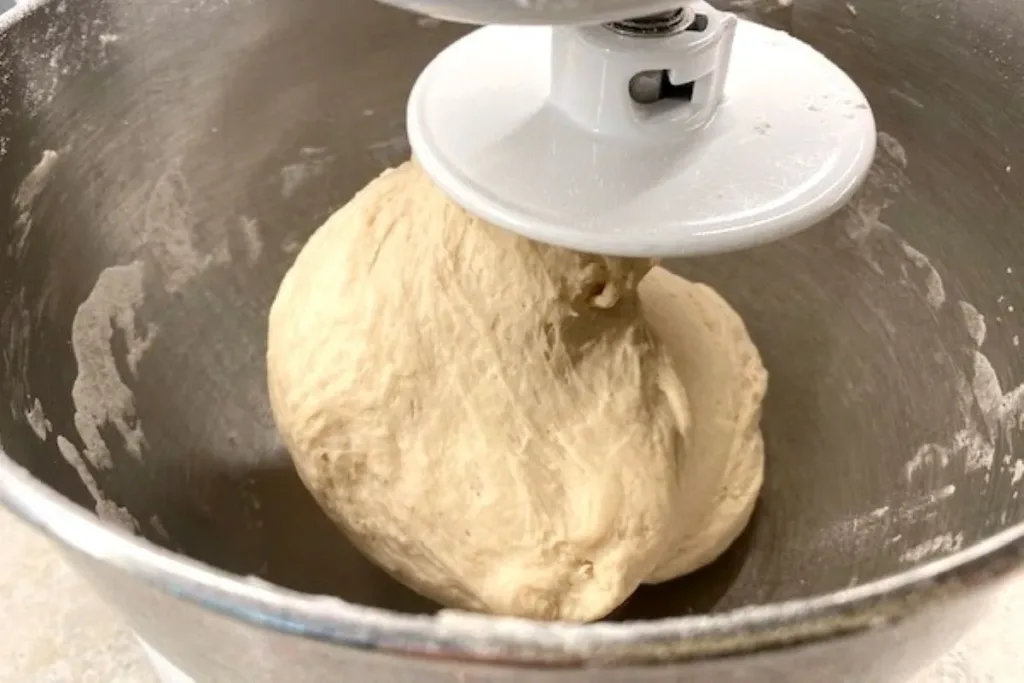
Stop adding flour when the dough is soft but handles without sticking to your fingers. Great bread dough should feel satiny and elastic. Remove the dough hook and gather the dough into a ball.
Oil or spray the bowl generously with non-stick spray and return the dough to the bowl. It's not necessary to wash it before you do. Smooth a little cooking or olive oil over the dough, cover the bowl with a dish towel, and set it in a nice warm place to rise for about an hour. When the dough doubles in size, shape it into whatever you want.
After shaping, the dough needs to rise again until it doubles in size, and this second rise will take less time than the first rise.

One batch of this basic "make anything" yeast dough will make two dozen cinnamon rolls or dinner rolls. Or you can make two dozen breadsticks or about sixteen Runzas. It will also make two standard-size loaves of bread, so you have many options!
This picture was taken on a baking day at my house. Breadsticks have long been a favorite with our six grandkids. When they were little, the grandkids used breadsticks for swords and then ate their weapons!
Brush the breadsticks with melted butter mixed with garlic powder before you bake them, and sprinkle them with kosher salt.
When they come out of the oven, brush them with the garlic butter mixture again while they are still warm. The result? Breadsticks like the ones at Olive Garden. You will make them again and again!
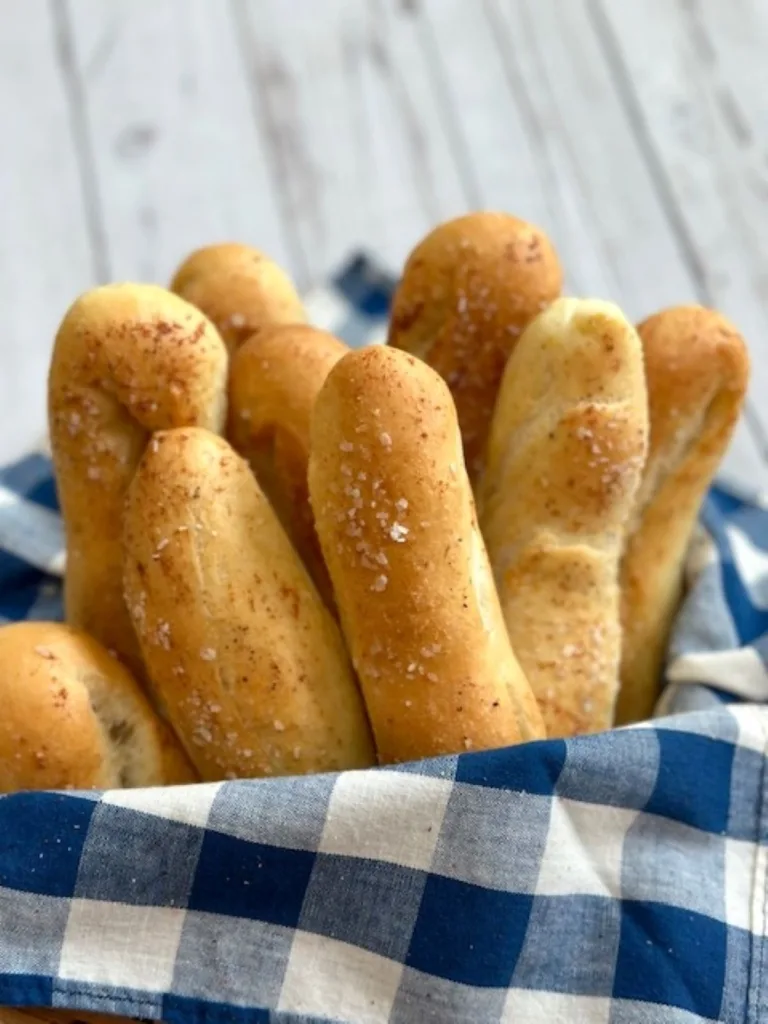
The cloverleaf rolls in the picture are a bit tedious and fiddly to make with yeast dough but a favorite for all the folks who love tearing each one into three pieces and adding lots of butter and jam.
Plain pan rolls, like the ones pictured in the round pan, are great to serve with soup or salad. If you like, brush with melted butter, then sprinkle parmesan or herbs on top.
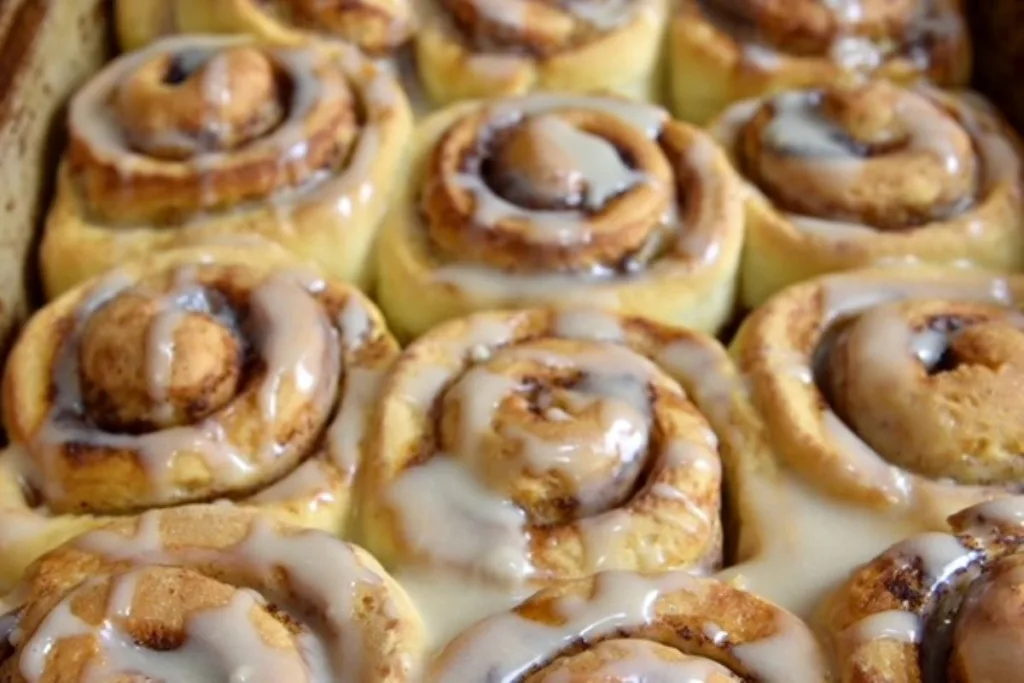
No Christmas at our house would be complete without at least two pans of cinnamon rolls with brown sugar glaze and a mountain of crisp bacon. And cinnamon rolls taste amazing with chili! It's a very Nebraska thing to do, but don't knock it until you've tried it!
Few smells are as pleasant as the aroma that wafts through a house when yeast dough is baking in the oven. But do you ever wonder why the smell of bread baking evokes such a unique response?
At the UCD (University College Dublin) Institute of Food and Health, Irish scientists studied the phenomenon and zeroed in on what people love about the distinctive aroma of bread.
The smell of bread baking is a powerful trigger because the olfactory bulb processes incoming odors. The olfactory starts inside the nose and runs along the bottom of the brain, directly connecting two areas strongly associated with memory and emotion.
Bread features heavily in our childhood, which is why it evokes such strong memories, particularly of family, our early years, and comfort. A survey of 1,000 people indicated that 89 percent said the smell of bread made them happy, and 63 percent reported it evoked positive memories.
Participants in the study, when asked to say a word that they associated with those memories, 29 percent identified the word "mum" or "mother," while one in five referenced the word "childhood." Another 16 percent replied "home" or "grandparents."
What thoughts float through your mind when you smell bread in the oven?

A very basic, easy white bread yeast dough you can use in many ways.
It is by far easier to make the dough with a stand mixer fitted with a dough hook. (But if you want arms like Jennifer Aniston, mixing and kneading the dough by hand might be your jam.)
If you want to make Runzas, here is the recipe for you! Runzas are another Nebraska thing! I discovered how to make screaming fast French bread by kicking this recipe of basic white yeast dough up a notch, and it's great!
Please do not hesitate to try your hand at yeast bread! If nothing else, it's a great way to save money, and the fragrance of bread in the oven is rewarding in itself!
If you liked this recipe, you are my people! If you like this recipe, please share it on your social media accounts like Facebook, Instagram, Pinterest, and Twitter! It would sure tickle me, and I would be ever so grateful!
If you haven't already, please look for me on Facebook and Pinterest, where I will share easy, delicious, family-friendly recipes every week!
Love, GB (Betty Streff)
Sign up for my newsletter and receive a free gift! A printable sign that would look great in your kitchen, framed above your sink, or just placed anywhere to remind us how lucky we are to have dirty dishes!
 Sign up now!
Sign up now!
I love to bake bread and it’s so over priced at the store. Can’t wait to try this recipe. Thank you for sharing and the hints were very helpful.
I am so happy to hear you want to try bread baking!! It is so satisfying and a huge money saver!! Bless your heart! Here's an even easier way to make a fabulous loaf of artisan-style bread with no kneading at all! It's amazing!!https://gbskitchen.com/how-to-make-a-rustic-bread-loaf-for-pennies/
Thanks so much for taking time to comment! Happy baking!!
Made bread for the first time in my life on a whim and it turned out perfect and husband approved! gave me a great confidence boost in the kitchen (even with having to hand knead without a stand mixer!)
You totally made my day!! THANK YOU for taking the time to tell me!! I made bread by hand for thirty some years before I got a stand mixer- it is still the most satisfying way to do it and I am jumping for joy that it worked well for you!! It will feel more an more natural the longer you do it!!
I used to bake bread with frequency when my kids were small. I haven't done it in years! Today I am going to use this recipe to make an Italian treat my family used to enjoy.Wrap dough completely around cooked Italian sausage links. Bake until golden,then remove from the oven and apply an egg wash (egg beaten with a small amount of water). Return to the oven until egg wash is set and bread is shiny and golden brown.Serve by smothering bread with "spaghetti sauce" and Parmesan cheese. Delicious!
Jenie, thank you for sharing! Your description is so perfect I can taste it! I am going to try it!! I love "grammyrabbit" 💖 i bet your grandkids adore you!!
I'm new to bread baking, I don't yet have a stand mixer.. is there any special way to knead the dough?
I did it by hand for years and it feels so Pioneer Woman! 🥰 I found this youtube video for you! https://youtu.be/BJiucv88flM?si=YVoPbe0huWjAhn9C
Best of luck, my friend!!
I’m planning on making this recipe and I was wondering if you use all purpose flour or bread flour for it? Does it matter? Also, do you have approximate bake times for the loafs of bread— I’ve never baked bread before so I don’t even know a ballpark estimate.
HI and congratulations on baking your own bread from scratch! You go, girl. If you have all-purpose flour, don't go out and buy bread flour. The only difference is that bread flour has a somewhat higher gluten content, which makes bread rise a little better. I used regular flour for the first 30 years, and no one complained!! LOL.
One batch of dough will make one standard loaf of bread, about a pound. If you make the dough into a loaf and put it in a bread pan, usually about 9" by 5", it will take 30-35 minutes to bake at 350 degrees. Test for doneness by tapping on the crust. The bread should sound hollow. I always like to brush the top crust with some melted butter- pretty and tasty! Good luck! Let me know!! ❤
Loved this recipe even though I haven’t attempted yet here in Colorado. Any suggestions for baking at 8600 ft? I know there are some tweaks I should consider for high altitude baking!!! Loved the idea of a warm car to proof dough, but I have to be on the look out for bears. Bet they love yeasty yummy bread too🤣
Great question, friend! I've never lived anywhere higher than Nebraska and Iowa- definitly a flatlander- so I had to get some advice. At 8,600 feet, baking bread needs a little mountain magic. Yeast rises faster way up there, so you’ll want to cut it back just a bit — about a quarter less than my recipe says. Watch your dough closely; it might be ready to punch down sooner than usual, because it also rises faster. You may also need a splash more liquid- like maybe 2 tablespoons (that dry air!) and bump the oven temp up 15–25 degrees to help the loaf bake and set up before it gets too puffed. Hope that helps. I alwyas say homemade bread is cheap to make and it's well worth experimenting a little to get it right because homemade bread is such a joy!! let me know how it goes!